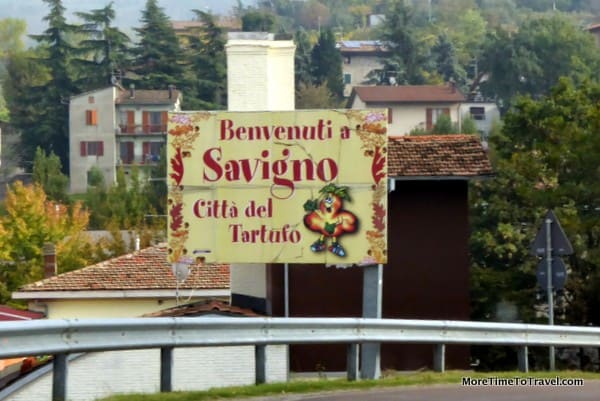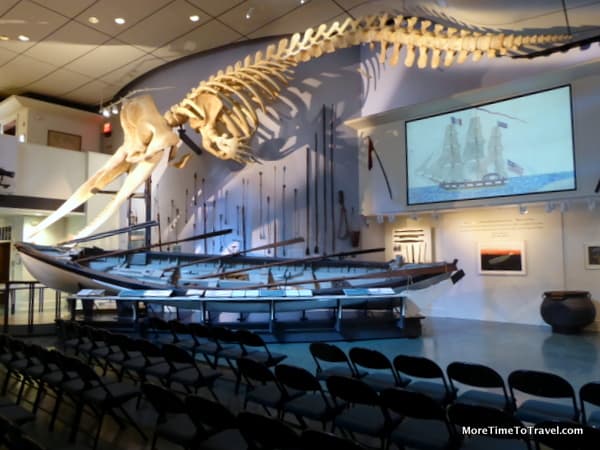A Nostalgic Texas Road Trip: Route 66, Cadillac Ranch and Buddy Holly

Guest contributors John and Sandra Nowlan share their nostalgic road trip in western Texas from Amarillo to Lubbock with memorable stops at the Cadillac Ranch and the Buddy Holly Center.
Even the plane ride from Houston to West Texas was fascinating. On the flat, farmland-covered plain below us, we saw scores of mysterious-looking crop circles. We soon learned that these were caused by “central pivot irrigation,” which uses deep artesian wells and long, wheel supported pipes that circle the water source.
Visiting Amarillo
We were heading to the major Panhandle city of Amarillo, the “Yellow Rose of Texas,” whose growth in the late 19th and early 20th centuries was enhanced by the railroad, cattle drives and Route 66, the famous trans-continental highway that wound its way from Chicago to Los Angeles.

Amarillo, with a population of just 200,000, has a remarkably large, modern airport. To get downtown we took Interstate 40, the multi-lane highway that replaced much of the Texas portion of Route 66. But to its credit, the city of Amarillo has preserved a section of the old highway in the Historic District and encouraged arts & crafts stores, antique shops and restaurants to locate there. In fact, one restaurant, the Golden Light Café, is the longest continuously operated restaurant on the whole Route 66.
History was also evident in our downtown hotel, Courtyard by Marriott Amarillo Downtown. Unlike most Marriott hotels, this one is on the National Register of Historic Places and was originally the 11-story Fisk Bank Building, dating from 1928.

It’s surrounded by other renovated historic buildings like the Santa Fe Railway headquarters and the old Paramount Theatre (built in 1932 in Pueblo Deco style). Just down the wide street (extra wide for cattle drives) we had dinner at the Crush Wine Bar, a great venue for Texas tacos, beer on tap and an excellent selection of wines.
On our first full day in Amarillo, after a great cup of java at Palace Coffee, we visited several of the city’s fascinating and quirky museums. First, was the American Quarter Horse Museum honoring the versatile racing and workhorse that’s had such an impact in North America.

Close by was the Kwahadi Museum of the American Indian. Built as a replica Pueblo Indian kiva, the colorful museum features the crafts and culture of the Native Americans who first inhabited the area. Local children have formed a native dance troupe and give performances throughout the U.S.

After a fine Tex-Mex lunch at Braceros on old Route 66, we stopped by one of the world’s unique sculptures, Cadillac Ranch. By the side of the road and looking a bit like Stonehenge from a distance, 10 vintage Cadillacs, several with big fins from the 1949-63 era. are half buried, nose-first, in a straight row. Graffiti is encouraged and all ten of these land yachts are covered in rainbows of color. The cars, in position sentry-like since 1974, are startling from a distance but even more so, close up.

Two more Amarillo vehicle exhibits kept us busy and entertained for the afternoon. Bill’s Backyard Classics has one of the biggest displays of vintage and classic autos we’ve ever seen. It includes a 1928 Ford Paddy Wagon. At the Jack Sisemore RV Museum, dozens of historic recreational vehicles (RVs) are on display. Particularly interesting are a 1948 Flxible Bus and the world’s oldest Airstream, a 1935 Torpedo owned by the Holman Family of Panama City, Florida, for 81 years.


We were told that Amarillo has more than 500 restaurants but its most famous, by far, is the Big Texan Steak Ranch & Brewery. Situated close to Route 66 and alongside Interstate 40, this massive eatery has a carnival atmosphere with a big gift shop, a live rattlesnake, a shooting gallery and games of chance. Serving more than 500,000 guests last year, its biggest novelty is the 72-ounce steak, “Free if you eat it all in one hour.”


The manager told us that about three people a day try to consume the four and a half pound chunk of beef but only one out of six succeeds. The other five pay $72.00. The atmosphere at the Big Texan was great fun (chicken-fried steak and “mountain oysters” were popular offerings) but, for normal appetites, quantity surpassed quality.
The next day, after an excellent burrito breakfast at Youngblood’s Café, we drove south to the superb Palo Duro Canyon State Park. This 120-mile gorge (two to 20 miles wide) was slowly carved by the Red River over the last million years. It’s the second longest canyon in the United States, only surpassed by the Grand Canyon. Popular with campers, the topography is rugged, colorful and spectacular.
On to Lubbock
On our drive from Amarillo to Lubbock, two hours away, we stopped at the Panhandle-Plains Historical Museum in the town of Canyon. It’s the largest history museum in Texas and has some excellent oil drilling and windmill displays. Of course, being Texas, there’s also a large collection of historic guns.
Like Amarillo, Lubbock (technically in West Texas, not the Panhandle) is a delightful small city for visitors. The population of 260,000 supports the 35,000 undergraduates at Texas Tech University. The football and basketball powerhouse had just come second in the NCAA Division One basketball championship but we were even more impressed by the Spanish architecture in all the buildings (tan bricks and red tile roofs) plus the remarkable outdoor public art collection throughout the campus.
But Lubbock’s main claim to fame is Buddy Holly. Born here in 1936, the rock ‘n roll legend had a series of hits (“That’ll be the Day”, “Peggy Sue”, “Oh Boy”, among others) and influenced other great performers like Elvis, the Beatles and Elton John before losing his life in a Iowa plane crash at the too-young age of 22.


His memory is preserved at his low-key gravesite, in streets (Buddy Holly Avenue), the Buddy Holly Center (filled with memorabilia from his career) and the new, Buddy Holly Hall of Performing Arts and Sciences. This acoustically-ideal concert hall, designed by Diamond Schmitt Architects of Toronto, will hold 2,200 in its main auditorium and 425 in a smaller concert venue. The $155 million USD project, all privately funded, will be finished early in 2020. Organizers say it will be kept busy at least 250 nights a year. Other medium-sized cities should be envious.
Buddy Holly is famous. Texas wines should be. A growing grape and wine industry, particularly in West Texas with its hot days and cool nights, is making waves in sommelier circles. We visited Lubbock Uncorked, the annual Wine ‘n Dine festival in the city’s American Windmill Museum (the largest in the world with 160 windmills inside and outside). Tasting stations featured only High Plains Texas wines and were generally impressive, particularly the Tempranillo, Malbec and Cabernet Sauvignon.
Our favourite museum in Lubbock was Silent Wings, located at the site of a former Army Air Field where glider pilots were trained for World War 2 duty between 1942 and 1945. Little known to the public, gliders were towed by allied aircraft into enemy territory and then silently dropped with troops and armored vehicles. Many crashed but most were very successful in routing the Germans. The museum includes a 15-minute film and several of these engineless airplanes that played a key role in the war.

We couldn’t leave Texas without barbeque so we filled up with excellent brisket at Evie Mae’s Pit BBQ in Lubbock.

The lines are long but the free beer in tubs of ice make the wait worthwhile. We also had to have a great steak and found the best one (along with signature Blood Orange Margaritas) at La Sirena in Lubbock. Not a Texas-themed restaurant but Latin American. A fine ending to an all-too-short visit. As we were told several times, “Y’all come back!”
*Guest contributors John and Sandra Nowlan are travel and food writers based in Halifax, Nova Scotia.
All photo credits, except for lead photo, John and Sandra Nowlan.
Disclosure: The Nowlans trip was hosted by Travel Texas, part of the Office of the Governor, Economic Development and Tourism, but any opinions expressed in this post are their own.




